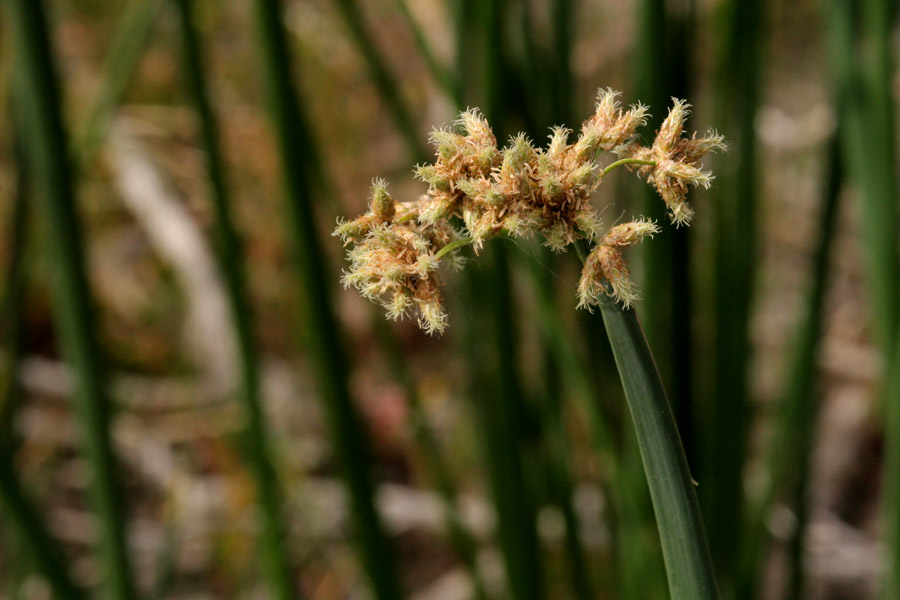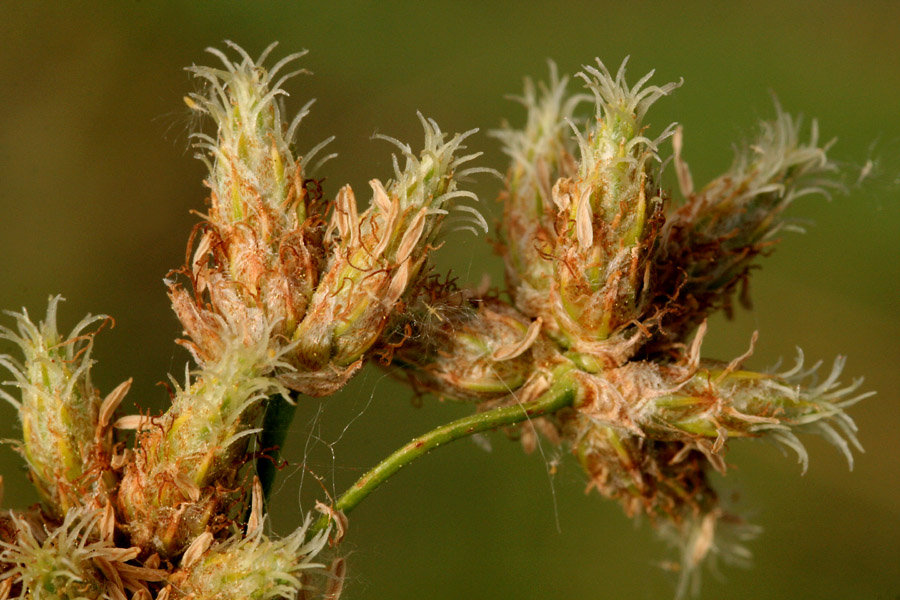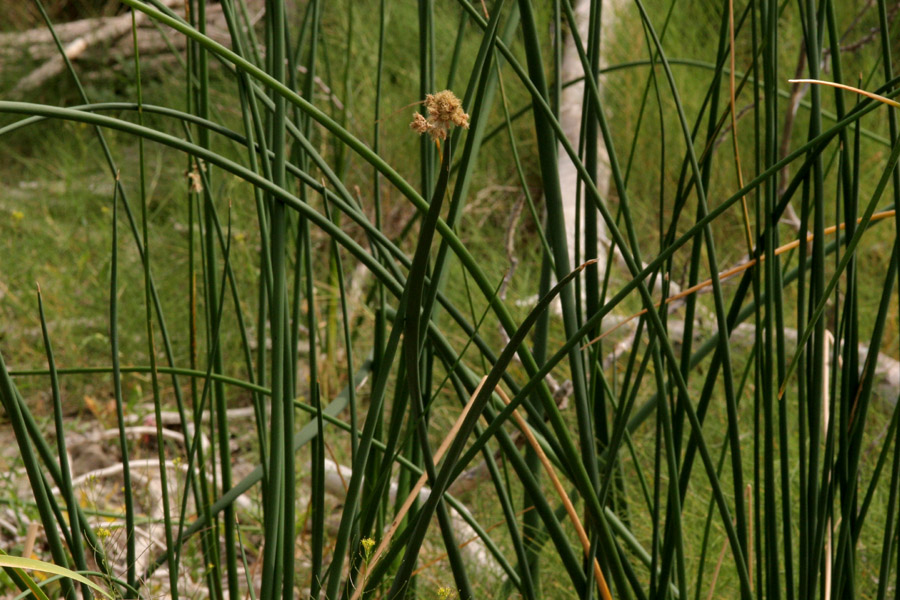Selected Plants of Navajo Rangelands
Bulrush

Bulrush is a grasslike species in the Cyperaceae (sedge) family. Bulrush is a wetland plant which forms dense colonies. It reproduces by seed, dispersed by wind and water. Bulrush seed establishes and germinates best on moist, bare soil. Hardstem bulrush also reproduces vegetatively from rhizomes.
The flowering parts are compact and umbellate with a greenish bract extended. It often forms monocultures in marshes throughout its range. It grows best on sites with saturated soil or standing water for most of the year, such as marshes, swamps, seeps, washes, floodplains, lake and stream margins, and wet meadows. Hardstem bulrush can grow in fresh or brackish water where the water table is up to 5 feet above or ⅓ feet below the soil surface. It is fairly drought tolerant; it can persist through several years of dry conditions.
Hardstem bulrush is an important aquatic or semiaquatic species. It provides cover for numerous birds and mammals. It is a staple food for muskrat and other small mammals. It provides valuable food and nesting for a variety of birds.
It regrows well after removal and is tolerant of fire. It is considered a problem species in some circles because it can be an aggressively invasive plant that closes in bare shorelines and open water in marshes, impeding waterfowl and shorebirds. It is seldom grazed by livestock if other forage is available. If upland forage becomes limited and soil conditions dry, livestock and big game animals may utilize hardstem bulrush.
*Based on Utah State University Range Plants of Utah description.


©2018 NMSU Board of Regents.
Individual photographers retain all rights to their images.
Partially funded by the
Western Sustainable
Agriculture Research and Education Program
(westernsare.org; 435.797.2257),
project EW15-023.
Programs and projects supported by Western SARE are
equally open to all people.